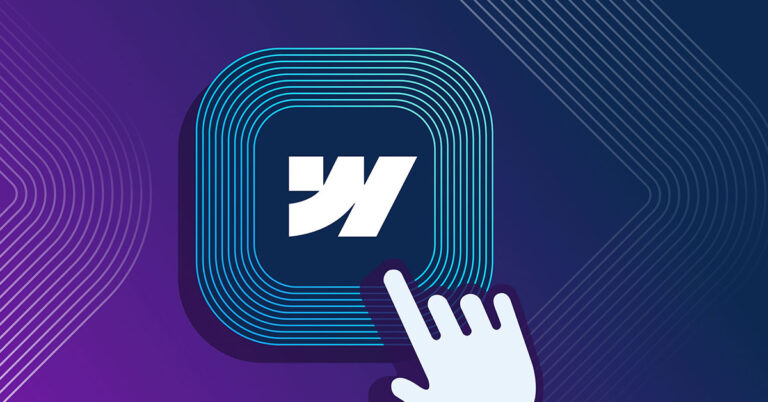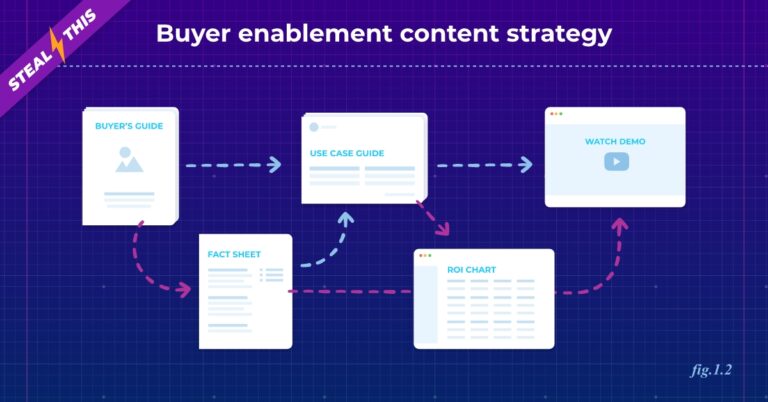The software you use to host your virtual event has a huge impact on everything from the attendee experience to the quality and breadth of the analytics you receive post-event. Here’s how to choose the right virtual event platform for your goals.
For most organizations planning virtual events in the first few weeks of the COVID era, the goal was to convert an already planned live event for online. Optimization wasn’t on the table. Attendees were thrilled to have a place to connect and were likely juggling working from home and the presence of other family members. Many were also teaching or caring for children. They were willing to put up with a lot of kinks.
Things have evolved quickly. Sheltering in place has turned out to be a huge accelerator. Ideas are being tried, learned from and iterated upon faster than the most agile of agile projects. As we adapt to the new normal, so do our expectations. Barebones experiences are not going to cut it anymore.
As we enter wave 2 of virtual events, businesses have the information and power, and a mandate to optimize these experiences to drive specific business goals. A key factor in meeting those goals is the software you use to host your event.
However, choosing a virtual event platform is not simple. Most current solutions were not purpose-built for virtual events. Rather, they were originally designed to provide a related service—such as webinars, e-learning course management, or event registration. As a result, they offer a range of capabilities at varying levels of maturity, some native, and some provided by partners.
Read on to learn about the key components of virtual event platforms and how to choose the right software for your business goals.
Hallmark components of virtual events include:
- Registration. A way to register for the event, select sessions and get tickets.
- Content delivery. Speakers, panels or other sessions that have been prerecorded or are streamed live—usually with the opportunity to watch missed sessions later.
- Sponsorship. Opportunities for sponsorship (and a way for attendees to interact with sponsors and partners).
- Networking & community engagement. A way for attendees to engage with companies, presenters, and each other.
While these components make up the core experience, to create a truly integrated virtual event, you will likely want to explore additional services, whether they are provided by the same vendor that handles your core services or additional providers.
1. What are your event goals?
The right virtual event platform depends largely on what you are hoping to achieve, so the first step in choosing a platform is figuring out what your goals are. Are you trying to foster connections, drive innovation, generate leads, educate, or simply keep your foot in the door?
Don’t assume your virtual event goals are the same as your face to face event goals were, even if you are converting an existing conference. And, don’t assume that your COVID-time goals will be the same as your pre-COVID goals. The most successful online events are designed for what your business and customers need now, not what you envisioned last November.
2. What virtual event platform capabilities are necessary to achieve your goals?

There’s no platform that is best-in-class across every capability—yet. Knowing what experiences are important to you is critical for choosing your core platform and adjacent services.
If you want to foster connections among attendees, then a well-designed chat mechanism is critical. If your event is more about building brand awareness, sharing information, or educating attendees, then the quality of the video stream will be key. If you want to make sure to retain sponsorship, you’ll want an engaging way for attendees to interact with sponsors.
Here are the key components to consider:
Pre-event.
Because virtual events aren’t constrained by the size of a physical venue, they offer an opportunity to reach many more people on the same budget. For instance, Gainsight Pulse usually has an attendance cap of 5,000—but was able to draw ~21,000 registrants when it moved to a virtual event. Strong pre-event promotion is critical for capitalizing on this opportunity. In addition to the capabilities offered by the virtual event platform, companies should develop an omni-channel demand gen strategy, including paid social, to drive registration.
Registration and ticketing. At a bare minimum, the registration system must capture contact information from attendees. If you are charging for your event or will have different cost tiers, it must be able to manage various forms of ticketing and payment as well. It’s important to consider both the features offered and the experience the platform enables. A complicated registration system can not only limit sign-ups and hinder attendance, but can impact confidence in your ability to put on a useful and successful virtual event.
Agenda. How will potential attendees and registrants learn about the content of your virtual event? If your sessions will be organized into tracks, it will be important to have an agenda management system that can support that, but even a simple schedule needs to be presented in a way that is inviting and accessible. A system that allows registrants to easily browse, bookmark or schedule sessions they want to attend helps drive registration and ensure that attendees can find and participate in the sessions that are most valuable to them. Also, if this is done during registration, you get a great early indicator of what is popular and what is not.
Speaker and sponsor management. Some virtual event platforms provide a portal to simplify speaker and sponsor onboarding and management, which can save a lot of time and hassle tracking proposals and collecting content from approved speakers and sponsors. Even if you have a fairly simple agenda, having a single place for speakers and sponsors to upload their bios, photos, final presentations, and collateral—and being able to give control over that to individual speakers and sponsors so your team does not need to be as involved whenever there is an edit or an update—can streamline the process considerably.
Pre-event promotion. Some vendors allow you to create your pre-event emails, social posts and other promotions through their platform, with features to help you grow your attendee list, such as the ability for invitees to see who else in their network is attending. Just like with your other martech investments, there are tradeoffs to using a virtual event vendor’s promotion platform instead of the tools you use for your other campaigns. To help guide this decision, be sure to ask how the vendor integrates with your other systems (see #3 below), especially your “source of truth” marketing automation or CRM system.
During the event.
These capabilities make up the bulk of the attendee experience.
Sessions. Most virtual event platforms offer the ability to stream live video, either natively or through a partner service. Additionally, all virtual event platforms allow attendees to watch pre-recorded videos and access recordings of live videos after the session is complete. If your agenda calls for multiple sessions to run concurrently, it will be important to find out how the platform supports that. Additional questions to ask are whether there are attendee limits for live streams, how soon attendees will be able to access the recording after the session, and how Q&A works during the session.
Notifications. Notifications can help ensure attendance during this extra-distracted time. Notifications can vary from alerts a set amount of time before a bookmarked session begins to curated lists of trending sessions to drive up enrollment and engagement.
Networking & engagement. You won’t be able to replicate the spontaneity and energy of making a connection with the person sitting next to you at the session or the bar, but there are multiple ways to bring networking and engagement into a virtual event. These include group chat, one-on-one chat, matchmaking, polling, live Q&A, small group demos, office hours and lounges. A key consideration is what kind of structure the platform provides around communications. How can attendees find the conversations they want to engage in, and what mechanisms are in place to enable them to participate in a meaningful way?
Sponsor offerings. Sponsor options tend to be one of the most immature features of virtual event platforms, which makes sense when you think about how most platforms were initially designed to support single session webinars or eLearning. In many cases, sponsors can be visited through a “sponsors” webpage—that attendees can choose to navigate to, or avoid entirely. Others encourage traffic by offering awards or badges for visiting certain sponsors—similar to a booth card at a live event.
Interface. The virtual event platform interface is like your venue. It may be structured like a website with each speaker, sponsor or session having its own landing page, or it may have a design that mimics an event floor and allows users to zoom in on different booths and breakouts. Like a physical venue, the more visually appealing, easy to navigate, and accessible the digital interface, the longer your attendees will want to stick around and engage with your content. If lead gen is a top goal, a key consideration will be how easy it is for attendees to find and download your content. How many resources can you provide in the interface and how visible will they be? To what degree can you customize the interface with your organization’s branding?
Post-event.
While most vendors don’t currently offer or optimize for any kind of evergreen event site, it’s important to consider what kind of post-event presence you’d like to have. How can you convert this virtual event into an ongoing community? Do you want attendees and non-attendees alike to be able to peruse the schedule to get an idea of what sessions you offered? How long will attendees have access to replays, presentations, or tools offered at the event? What about sponsor offers? Will sessions be accessible for non-attendees (via a registration form on your site) or will access always be limited to those who participated in the virtual event?
3. What additional capabilities will you need?
If your only goal is brand awareness, the attendee experience may be the main focus of your virtual event platform decision. But most marketing organizations would be missing out on the key benefits of virtual events without at least some of these additional capabilities.
Reporting and analytics. What sessions did registrants attend, how long did they stay, and where did they go when they left? Who visited your booth and what collateral did they download? Did multiple attendees from the buying group engage with your content at the event? What about those casual conversations—will any of those turn into leads? Virtual event reporting and analytics capabilities vary considerably from platform to platform and in most cases are very limited. Of note, platforms born out of learning management systems (LMS) have a leg up in this area. If you are using a virtual event platform that uses partner services for some capabilities, or if you are combining multiple platforms, it’s important to consider how these platforms integrate with each other. For example, how will you be able to get reporting and analytics on all aspects of the event, from registration to attendance in video streams, to chat?
Integrations. Simply put, the ability to integrate with your marketing automation, CRM, web content management and analytics systems allows you to leverage the power of those systems to create more relevant pre- and post-event engagements. In addition to asking whether a platform integrates with your particular martech stack, it’s important to find out how robust and flexible the integration is, and how experienced the vendor is with that integration. The best integrations allow the data to flow seamlessly into your systems in a way that works with your existing process, without time-consuming manual processing.
4. Not optional: What do the vendor’s professional services look like?
All event planners know that no matter how much you plan, there are some things you can’t predict. It’s no different for virtual events. However, while your event manager may be able to find that missing chair or track down a lost speaker at a live event, they are much less likely to be able to troubleshoot attendee login issues or video glitches.
While professional services may seem like an optional feature or sell-up, we believe this is one of the crucial components of a smooth virtual event. Virtual event platform vendors not only draw on their knowledge of their own platform, but their experience running hundreds of events to identify the root of a problem and address it quickly.
Make sure to ask virtual event platforms vendors what kind of tech support they offer before, during and after the event. (Note that this is different from production support, such as helping you create your presentation or prep your speakers.) Make sure you understand the scope of that support, and what the process will be to troubleshoot issues in a multi-vendor environment.
The Iron Horse insight.
The first wave of COVID-era virtual events have shown that not only can large conferences be successfully virtualized, but there are many benefits and opportunities when you do so. Virtual events cost less and can be pulled off in a shorter amount of time than their live counterparts. They are more accessible than live events, allowing more people to attend, many of whom may not be able to participate otherwise. At the same time, online events can be incredibly tiring and can’t totally replicate the human connection that is at the heart of in-person events. We don’t know how long restrictions on face to face events will last, or what physical events will look like when restrictions lift, but it is almost certain that virtual events (in addition to webinars) is a marketing tactic that is here to stay.



